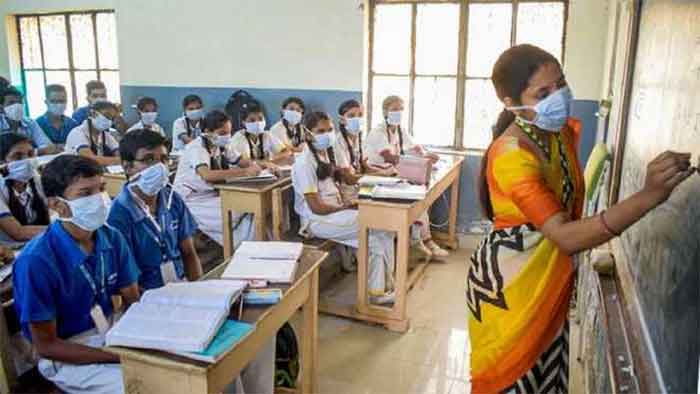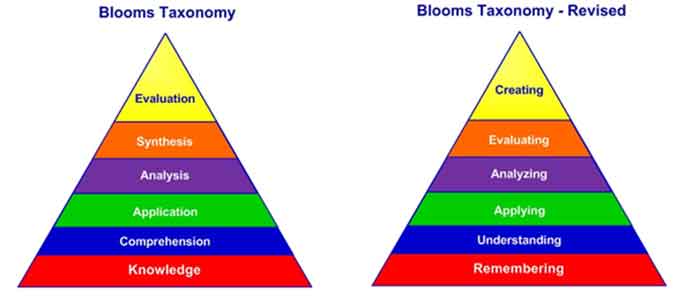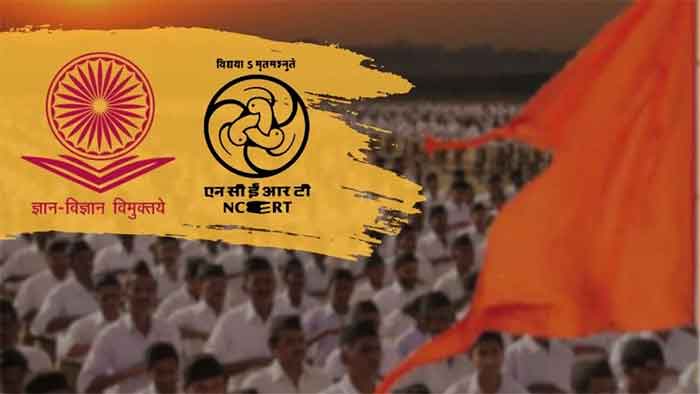
Prologue
Some years back, I was visiting government schools in an eastern state of India, when the government official accompanying me said, “Let me take you to a SMART school, which is doing exceptionally well”. With much anticipation and apprehension (because I’ve already had experienced some SMART schools in other states), I agreed, and within half an hour’s drive we reached the said school.
The High School had an impressive campus and building, and it was clear that the government had directed reasonable funds to project the school as one of its best. The Head Master was cordial and gave me a brief about the achievements of the school.
We were next taken to the classrooms, where the girls and boys were seated separately. On asking, I was told that the parents object if they are made to sit together. On my suggestion, I was also taken to the library, where the dusty almirahs, full of fat untouched books, clearly indicated that the school had enough funds to buy expensive books, but would rather keep them safe than have them soiled by the students. I was, however, impressed with the provision of pocket book hanger, which had well used slim books lurking from its pockets – clearly an indication of some project on Reading which promotes use of pocket book hangers.
And then it was time to visit the SMART class. A separate classroom has been assigned , where I was to observe a science class for, as far as I can recall, level 6 or 7. I was informed that the SMART class was meant to give the students an opportunity to explore topics they learnt from their textbooks with the aid of audio visuals, hands on experiments etcetera. I was delighted to learn that a national level academic organisation, very famous for its educational methodologies and materials, have trained the teachers and shared their curriculum.
The classroom had a big TV for projection of visuals, few furniture, many charts and posters, perhaps from several training projects. The teacher was teaching a group of 25 to 30 students. She was teaching ‘Human Body Systems’. As I entered, I saw a human body drawn on the floor with a chalk . I seated myself at the back of the class. She had some printed manuals infront of her which she was following.
She read, (in Hindi, of course) in a sing song voice – “…Then the teacher will draw a human body on the ground with a chalk… what will she draw?”
The students looked here and there, fiddled with their pencil box, and replied in chorus, in the same sing song voice- “…a human body”
Teacher- “Then she will ask one student to point out the heart…what will she ask?”
Students – “…to point out the heart”
Thus, it went. She kept reading instructions from the Teachers’ manual, and the students repeated behind her. The screen of the TV had a human body displayed with, what I thought, interactive tags on each organ, where, if you clicked, a pop up will come up to display the details of an organ.
When I came out of the class, the Head Master and the Government official asked me, with a note of pride in their voice, what I felt about the proceedings. I asked for a cup of tea.
What to expect in the article
I went into the entire episode as I felt it would be a pertinent introduction to my article, where I seek to explore some of the new ideas which had emerged in Education scenario, a little over the last two or three decades, but have largely failed in our country because of several reasons, which shall be discussed here.
Many articles and papers have been written in the past on these theories, and much of these have been prescribed by The National Curriculum Framework (2005), but I felt the need to discuss why the implementation has failed over time, as it might throw some light on what could be done in future. This paper is more from the perspective of a practitioner, and I attempt to summarise my inferences from years of observing several classrooms across India. The paper will attempt to discuss briefly-
- some new ideas in education. I choose only three as the scope is limited in this volume
- the reasons of failure in implementation of these ideas in Indian context (with reference to Indian mainstream school system)
- suggestions on what might help in implementations of these ideas
However much I feel tempted to discuss alternative school systems, in this article, I have limited myself to the mainstream formal schools which includes the government run schools and the Private schools.
From Teaching to Facilitation
How can the Veda be grasped without tutelage
Anaditya gurOragrE pratibhaati katham srutih – Bhaarata Manjari 3-21.938
Acquisition of knowledge through a system where the teacher is the benevolent ‘owner’ and ‘giver’ of knowledge, who fills in the students’ tabula raza (or empty slate), with knowledge, is as old as the Gurukul system in our country. It was for the Guru to decide :
- what to learn
- how to learn
- how much to learn
- what is age appropriate
Hence, the teacher selected texts, delivered or transmitted knowledge (mostly through lecture methods), and expected the students to acquire the same knowledge. The students had a passive role, where they acquired knowledge from the teacher. Knowledge flow was from the teacher to the students and never the other way round or between learners.
This is much in line with Behaviorism, the learning theory credited to Skinner, which says that learning happens when a response is generated by a stimuli produced by the teacher.
When we consider our own childhood classrooms, most of us shall be able to recall teachers whose instructional designs were based on transacting the textbooks through lectures, rote learning and evaluations. The teacher had an active role to play, whereas the students mostly tried to follow what was being ‘taught’.
This perception of ‘Teachers, and only teachers are responsible for learning’ was challenged by Vygotsky’s Constructivism, who said knowledge can be ‘constructed’ by learners, and teachers have the role to facilitate the process of learning. Knowledge flow need not be necessarily be unidirectional. Also, it must be mentioned, with the advent of internet, teachers’ role of sharing information became redundant as every information is available at the tip of the finger. The teacher, now had the more important role of facilitating the process of how students should effectively use the vast information available to them.
This was (theoretically) accepted by the education community worldwide, India being one. This meant teachers would have to design lessons, more or less, in the following manner :
- Teachers to introduce the topic, not limited to lecture method.
- The teacher would set expectations in consultation with students
- The students would have the liberty to explore, experiment, argue, debate, research, and share their findings in innovative ways. They may create new knowledge.
- A student may work in isolation, but ideally groups of students would be involved, so that there is ample scope of peer/social learning
- The teacher would provide props/ scaffolds /directions but never ‘tell’ the answers
- The result or the outcome of the learning might be varied
- It is the process which is more important than the outcome
Now this posed a challenge, almost a threat, to most of the traditional classrooms.
For ages, in our traditional learning system, the teacher has been assigned the role of Param Bramha. There is, hypothetically, no knowledge beyond him. Hence, if he is assigned the role of a facilitator, it is uncertain if ‘knowledge’ would be attained. The uncertainty is in the minds of the parents, the teachers and even the students. It is deemed most appropriate to fill in the minds of the students with knowledge, than leave it to the uncertainty of ‘knowledge would evolve’.
Secondly, it was assumed, that the role of a facilitator would diminish the importance of a teacher. However, in actuality, facilitation is hard work. It requires a very methodical and yet, innovative approach to design a lesson which gives ample scope for students to walk the alleys of knowledge, where they acquire several skills as they achieve the learning outcome. Facilitation does not mean merely assigning task and moving out of the room. It involves:
- Designing task
- Assigning task
- Setting expectations
- Creating and Providing scaffolding tools
- Checking for progress
- Redirecting/ reviewing as and when required
- Creating scopes for sharing
- Showcasing learning
Thirdly, Facilitation demands time, as is indicated above. Students must be allowed enough time to explore, make mistakes, revisit findings and come to conclusions with support from teachers. And while the National Curriculum Framework has , time and again, focussed on acquisition of skills rather than transaction of chapters from textbooks, most schools , and even higher education bodies, have made it mandatory for the teachers to cover all topics and chapters in a stringent, routine bound, academic framework. Also, there are several chapters to be transacted by the end of the year. As a result, teachers find it convenient to read and explain the text and expect the students to rote learn and reproduce. Such learning, needless to say, has a short life.
Going back to my experience in the SMART class , which I had mentioned at the beginning of this paper, I can clearly understand why, in a 45 minutes class, the teacher thought it was better to read through the teachers’ manual , than allow the students to point out the different parts of the body system , make mistakes, correct themselves and learn.( I would like to point out here that , in my opinion, even the instructed activity is not a very ideal lesson which moves away from the traditional ‘teaching’.) In many schools, I have observed, the practical classes are conducted theoretically, just to save time.
Also, a typical Indian classroom is always designed in a way where the entire class literally looks upto the teacher, who is on a raised platform, without any scope to interact with each other. Teacher has very little space to move around, as the furniture blocks the way. There is no question of students moving around, as this is also considered to be indiscipline. There is no interaction space, where students can sit in bunches and discuss in groups. We have long benches and desks in most schools, and in several government schools, the desks and benches are tied together, limiting any movement of students. Hence, teacher can hardly do anything more than stand on the platform, read from a chapter, explain, write on board and expect the students to grasp what is being taught, take down notes and reproduce the same. There cannot be group discussions, group activities, experimentations, explorations or showcasing. Apart from the fact that most mainstream classrooms have limited space, it is also a mindset which stops us from designing convenient furniture or considering no furniture, arranging a classroom which helps the process of facilitation, or look beyond classroom for learning space. It is tragic that in a country where great educators like Tagore thought and practised open classrooms against the limitations of four walls, we still consider it best, and often respectable, to stick to the confines of a concrete building.
From Rote learning to Active learning

We may all recall those days in our childhood, where our parents would insist on sitting up straight and studying hard. By ‘studying hard’, they would often mean learning tables, poems, answers to questions, short notes, scientific principles, names of kings and princes, dates of wars and famines, capitals of countries and states – almost the entire textbooks by heart.
Recall and recognition cannot be ignored totally. It forms the base of the learning ladder of the triangle of Bloom’s Taxonomy, which maps the process in which we think and learn. In the diagram below, we see that the lower levels are more fundamental, whereas the higher levels are more complex.We may all recall those days in our childhood, where our parents would insist on sitting up straight and studying hard. By ‘studying hard’, they would often mean learning tables, poems, answers to questions, short notes, scientific principles, names of kings and princes, dates of wars and famines, capitals of countries and states – almost the entire textbooks by heart.
While earlier the focus was more on the lower levels, with the ‘paradigm shift’ in Education, the focus moved to the higher order skills – Analysis, Synthesis and Evaluation.
The design of the triangle, published by Benjamin Bloom in 1956, underwent revision by a group of cognitive psychologists, curriculum theorists and researchers where Synthesis and Evaluation were replaced by Evaluation and Creation.
Now, a classroom which envisages acquisition of Higher order thinking skills (HOTS, in brief) like Analysis, Evaluation and Creation , cannot solely depend on Rote learning methods. It has to reframe the instructional strategies where the students would be actively involved and be in charge of learning. It involves physical and mental engagement in a more holistic manner, where the learning is joyful, meaningful, engaging and sustained.
This would necessitate –
- multiple learning resources to cater to children with multiple interest and learning pattern
- adequate number of skilled teachers.
- adequate space
- an instructional strategy which ensures activity based/project based/inquiry based methods
Again, the Indian education scenario faced more or less the same hurdles as discussed in the previous section.
Currently India spends 4.6 % of its total GDP on Education. It is in the 62nd position in total public expenditure on education per student. The amount can hardly ensure adequate learning resources for all kinds of learners. Not many private schools have a clear idea on what could be appropriate learning resources. Sadly, we have not even achieved the minimum in most schools. For example , children with musical intelligence will hardly have enough resources in a typical Government or private school in India. She/he will have to remain content with resources related to, say, visual intelligence.
The second ask of ‘adequate number’ of ‘skilled’ teachers almost sounds unfeasible in Indian education scenario. The allocations of teachers are very scarce in Govt primary schools, and with several tasks assigned to them – from running and management of Mid day meal to conducting govt surveys, it is left to one or two teachers, at most , to run the show. It is physically impossible for one teacher to run from one classroom to another to conduct classes. Sometimes large numbers of students are seated in one big (or small) hall, where the teacher is expected to conduct multi grade teaching. It is almost ridiculous to expect a teacher to create an activity based instructional strategy where children are actively learners. The private schools are in a better situation, with better infrastructure and more teachers. However, moving away from traditional rote learning methods and strategizing a class for active learners requires open mind and innovative ideas, which is often lacking.
Fear of failure is a great deterrent in moving away from rote learning. Our education system has, willingly or unwillingly, instilled this fear in the hearts of students, parents and even teachers. However, failure, if facilitated positively, is the first step in generating curiosity, creating challenge and urge to look for answers. It is this process which is often more important than the end product. But almost no evaluation system acknowledges or rewards the process. As a result, it is considered much easier to ‘learn by heart’ the correct answers and fetch good marks, and not consider the steps involved in reaching the correct answer.
In the previous section, I have already detailed on how lack of open space is a constraint in the learning process which engages active learners.
The question of ‘limited time’ where children are expected to learn (or rather, show end results) a lot from their textbooks, also cannot create any scope of active learning. Active learning requires deep down research which requires ample structured and unstructured time.
The above reasons would probably help in understanding why the teacher in the classroom I mentioned at the beginning of my paper, was more comfortable falling back to Rote learning than relying on Active learning, which was expected in the lesson plan provided to her. For active learning, she would have to draw a human body ( many teachers cannot draw)on ground, which would require enough floor space, ask students to draw the different systems on the human body , with great chances that many would do it incorrectly at the beginning, and hence ‘ waste’ a lot of time, and of course what is the point in doing something wrong, when the correct answer is provided.
From Unthinking to Thinking
“If I had an hour to solve a problem I’d spend 55 minutes thinking about the problem and 5 minutes thinking about solutions.”
― Albert Einstein
The Bloom’s Taxonomy mentioned in the above section talks about the Higher Order Thinking Skills (HOTS).
“Thinking” has occupied a major portion of contemporary pedagogic thought practices , which involves Critical thinking, logical thinking, reasoning, inferring, problem solving ,Creative thinking and, more recently “ Design Thinking” (which involves identifying challenges, gathering information, generating ideas, providing solutions and testing its efficacy. )
A coherent pedagogic model is required to analyse, align (with curriculum) and deliver the plethora of Thinking skills in classroom practices.
Some of the requisites of practising Thinking in classrooms are-
- An open ended curricula which allows to explore
- An open mindset which does not expect just one ‘correct answer’
- Teachers trained in introducing thinking strategies and thinking tools, approaches and methods which integrates Thinking
- Special ‘Thinking’ classes
- The leisure of time to ‘Think’ and not a hurried class
- Apart from an end of the term evaluation system, a continuous and comprehensive evaluation
However, none of the above can be achieved in a ‘regular’ classroom scenario. Additionally, to the reasons cited in the above two sections, it would be worth mentioning that it is often assumed that ‘Thinking’ comes naturally and needs no practice. Even an enlightened teacher, who understands the importance of ‘Thinking’ would tell the students to ‘think and answer’ after challenging them with a critical question, assuming that the students will use all their mental faculties and come up with a bright answer. It is often not the case, as, unless the students are guided on methods of Thinking, they will reach a nought. However, very few Teachers’ training courses include methods of thinking.
It needs also be mentioned that teachers often feel the urge to tell the answer than allow the students to ponder on a critical question. It may be said that it is a practise inherent to our traditional belief of acquiring knowledge from forefathers, Gurus or teachers only.
Creative thinking and design thinking involves coming up with, perhaps, a new answer to a problem. How can we measure ‘new’ knowledge? Our evaluation systems are standardized systems and missing out a prescribed ‘key words’ is penalised severely. Attempting something new is, therefore, unacceptable. A Roald Dahl, with his penchant to create new words like Gobblefunk or Hopscotchy will not survive in our classrooms.
So we plug all possible faculties to Think in classroom and rely on the process of ‘Unthinking’ where the only guidelines are what is written in the textbooks.
And here we need to mention a serious gap in our education system. India is a country of many languages with several dialects in each language. The textbooks are, however, written in just a few languages.
Based on my observations of classrooms in our country and some others, I would like to propose the following :
The focus should be on acquisition of concepts and ideas, instead of studying chapters in isolation. This should help in cutting down on the burden of ‘transacting textbooks’ and teacher and students might find more time to explore and study in depth. The teachers and students must have the liberty to choose their own texts (not limited to written materials only, but extending to visual and aural materials, or even real life persons/ space/ objects), if possible. This would help teachers to design the lessons in a way where students use several methods to reach their understanding, without cutting edge restrictions of time.
This will only be possible, if syllabus simply highlights the main concepts. For example, in language , individual experience vis -a-vis collective experience could be one of the ‘ideas’ to explore. The teacher and the students could select appropriate texts, as is suited to their level, cultural context, etcetera.
The evaluation system should be a continuous one, to strengthen methods of transaction. It should test understanding and application, and not merely stress on memorisation. And while all the Boards of learning concur to this, every test conducted by the boards have a very large percentage of questions based on rote learning – which expects students to memorise names/ numbers/dates/ principles from textbook. What if students were asked to establish a principle of Science by showing the scope of its application in his/her own project? The ownership of knowledge would get transferred from teacher to student. Process should be awarded as much as the product. So, if a student argues a point well, he/she should be awarded marks even if he/she fails to reach the ‘ correct’ answer. There should be more open ended questions, in which students are allowed to interpret in their own way. The Comprehensive and Continuous Evaluation system mandated by Right to Education Act in 2009 broke down the ‘only summative’ evaluation system and called for a formative assessment as well as summative evaluation. Sadly
Schools should design their space to make it facilitation friendly – not teacher centric but learner centric. Students and teacher should be able to face each other allowing free interaction, move about and gather in groups as and when required. Outside space should be optimised as space of learning. Furniture, especially in lower classes, is not a necessity. Free space is.
Most often, even after training teachers for days, I have noticed, teachers would prefer to ‘tell’ students, and feel very apprehensive about ‘leaving them on their own’. This mindset will have to be addressed repeatedly, so that teachers understand that learning happens even when the students are wrong. Very rarely , in teachers’ trainings , we include the idea of scaffolding or creating topic based scaffolding tools. Even if it is done, most teachers prefer to give some printouts as handouts, without ever integrating them in the learning process.
Instructional design should accommodate various learners – visual learners, aural learners, tactile learners and others. Teachers could help students choose their preferred way of learning and presentation of learning. This does not mean that the teacher has to ‘teach’ using several methods, but she should be prepared with several tasks for students, which they will be able to take ahead on their own.
It would be almost audacious to demand a separate ‘Thinking’ class, but every subject must have clear cut scope to integrate exercises which involves reasoning, logical thinking, critical thinking and all the plethora of Thinking skills which are essential skills. Every evaluation system should have a certain percentage of questions which would pertain to the Thinking skills and students must be marked accordingly. Teachers’ training must include strategizing Thinking classrooms. The B.Ed and other Education related classrooms should reflect a Thinking classroom, so that future educators get used to a system of learning which promotes. Right now, most B.Ed classrooms teach through lecture method how to teach innovatively. The B.Ed curriculums should align with what is expected in a next gen classroom.
Malini Mukherjee is an educator with rich experience in working with various mainstream, CSR driven and alternative projects. She is also a storyteller and writer. She runs her own education community – ‘uraan’ in Kolkata. She can be reached out at [email protected].















































